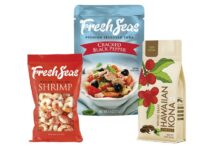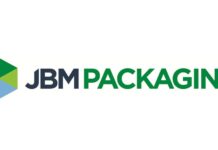More than 143 million COVID-19 doses had been given in the UK as of the end of May 2022 since the start of this historic immunisation programme in 2020. Without a doubt, the pandemic vaccination programme has significantly contributed to raising awareness of research into and use of liquid medicinal medications, both locally and globally. The market for liquid pharmaceuticals has been expanding as a result of the significance of biologics and cancer medications, which can be produced more successfully in liquid form.
In the past, medicines were created in a stable state, requiring years of research and development to generate doses with a long shelf life. To meet consumer demand for pharmaceuticals that are available more quickly, producers must stay on top of production techniques. As a result of market changes and the production of the COVID-19 vaccine, more liquid medications are now produced directly into bottles, vials, and ampules as common packaging formats.
Liquid pharmaceutical manufacturers are aware that mistakes will have the most severe repercussions. A patient could die if they give them a product with the wrong dosage, for instance. The other major problem is fake medications. Most other nations follow the US’s lead in addressing this issue through the Drug Supply Chain and Security Act (DSCSA), which provides mechanisms to reduce counterfeiting.
Liquid pharmaceutical producers need to be at the vanguard of product quality standards, making sure that their dosages are accurate and secure to safeguard patients and consumers. The packaging, labelling, and in-pack product information needs to be accurate and current, and companies must be able to track their products throughout the production process and the supply chain in order to comply with DSCSA. Securing safer drugs will be easier if openness and verification of their legitimacy are provided against counterfeits.
Of course, in order to quickly bring safe, affordable liquid pharmaceutical solutions to market, these difficulties must be resolved while still operating effectively. The US Food and Drug Administration’s (US FDA) Current Good Production Practise (CGMP) regulations cannot be compromised, thereby requiring that product inspection solutions be implemented in the manufacturing and packaging processes. There are also certain extremely special needs that manufacturers must fulfil. The following actions assist with quality control in liquid pharmaceutical packs:
-
Fill level management
Since liquid pharmaceutical goods are typically housed in small, delicate packs like glass vials and bottles, they must contain a precise amount of dosage. Numerous things could go wrong in this situation: the dosage could be under- or overfilled; the bottles themselves might not be completely uniform, with tiny but crucial variations in tare weight; the size and forms of these vessels make them inevitably prone to tipping over and breaking during processing.
Each container or vial may weigh very little when empty or when full; hence, weighing devices must be able to provide extremely sensitive and accurate measurements. The required precision and accuracy can be achieved by checkweighers utilising elevated Electro-Magnetic Force Restoration (EMFR) load cells. To lessen the danger of downtime brought on by broken or damaged vials, careful management of this kind of delicate primary packaging, comprising sorting and rejection procedures, is essential. All of this must take place at normal production rates.
The use of a checkweigher with this degree of accuracy and product handling benefits liquid pharma makers even more. It offers weighing information showing that verified weighing requirements were met, which is necessary to enable conformity with industry and government regulations. It also carries an economic argument and an assertion about the quality of the produced goods. Accurate weighing that detects over- and under-filling mistakes aids in complying with weights and measurements, lowers the expenses associated with over-filling and product giveaway, and diminishes the possibility of reputational risk – and the costs that flow from it – to the manufacturer.
-
Control of completeness
In the world of liquid pharmaceuticals, a product is only complete when it comes with usage instructions, most frequently in the form of a folded pamphlet. A very precise and sensitive weighing system is needed because the weight difference between a package with a sheet and one without can be quite small. These minute weight changes can be found by checkweighers, which can accomplish this without slowing down production. They may also have a countercheck mechanism, that verifies that rejected goods have been appropriately classified as off-weight.
Similar to fill levels, having the capacity for product inspection to spot and fix these kinds of problems before a product is disseminated can save manufacturers a lot in terms of money and image through preventing product recalls. The key benefit, however, is ensuring the safety of users. Additionally, it helps them comply with regulations like FDA 21 CFR Part 11, which mandates the creation and electronic storage of an audit trail of all changes.
-
Serialization
Serialization is not only prudent, but also necessary. Now that each product has a distinct serial number attached to it, there is complete tracking and tracing of individual packets from the source to the point of sale. Serialization might make it possible to recall impacted products in smaller batches as opposed to larger ones in the event that a problem emerges and a product recall is judged essential.
Serialization helps with regulatory compliance and, in the case of liquid pharmaceuticals, can specifically help fight the distribution of fake drugs by providing assurance that only real ones are being used.
Packs of medications with a distinct and verified serial code are a sign of high quality since they instantly convey accountability and validity on the part of the pharmaceutical producer. The integrity of the coding itself might improve or diminish this perception of quality. The code must be distinct and readable with no smearing or skewing, whether it is displayed on a pre-printed tag or printed directly onto the packaging.
These problems are clearly highlighted by visual inspection methods. They are able to read serial numbers, verify them, and spot products with poor or erroneous print. Typically, liquid pharmaceutical medications are packaged in a range of bottles or vials with varying dimensions. Unfortunately, these kinds of spherical containers have a tendency to move on the conveyor belt, which can make the visible written codes difficult to see. In order to print and check these containers, serialisation equipment must be adaptable. It may also be advantageous to select an imaging system that offers a full 360-degree view of the product surface.
-
Averaging
Product tracking is made simpler, and supply chain logistics function more smoothly when products are combined into larger batches. Aggregation is becoming increasingly required for compliance as it becomes a legal obligation in several nations (US legislation explicitly takes effect in 2023) It works in tandem with serialisation to aid in the battle against fake drugs.
Aggregation presents several technical difficulties, particularly when unoriented objects like bottles or vials are packaged in a case and the codes are thus challenging to see. This issue can be improved with printed assistance codes on the tops or bottoms of bottles. It is a difficulty, though, necessitating coordination, as it adds more phases to the production process that require more machinery.
For makers of liquid pharmaceuticals, it’s critical that their aggregation systems accommodate a range of round containers, can examine top or helper codes, and can validate minute details in datamatrix codes. Advanced camera technology will be able to inspect various complex datamatrix codes using either a fixed focus lens or a liquid lens. In addition, it is crucial that these systems can successfully interact with Level 4 and Level 5 systems since the supply chain needs to be informed about the serial and aggregation data.
-
Software interoperability
Software is essential for accurate and efficient serialisation and aggregation, and this cannot be stressed enough. Without it, it is difficult to track products, monitor processes in real time, or manage inventory levels. Although it presents a significant difficulty, addressing software connections is essential. Manufacturers may obtain that real-time image that will help spot problems and potentially stop them from developing in the first place by providing product inspection devices with the appropriate software connectivity.
Checkweighing for fill-level and completion checks, visual inspection, and track-and-trace software are typically included in the product inspection regime of liquid pharma firms. These systems perform very varied tasks and collect very diverse types of data, but they all need to be able to link and communicate with other established production-line systems and processes, as well as provide strong user protection and performance monitoring. They must also provide a localised audit trail that documents activity such as user logins and modifications to machine setup in accordance with FDA CFR 21 Part 11 regulations.
Conclusion
Quality in liquid pharmaceuticals encompasses both the production of the drug itself as well as the processing and packaging steps that put it into the supply chain. A solid product inspection programme is at the core of a strong quality assurance program. Checkweighing, visual inspection, and track-and-trace technologies are the manufacturer’s friends when it comes to ensuring that their products are secure, accurate, conforming, and traceable across the increasingly digital and interconnected supply chain.
The problem of quality management is made even more difficult by the fact that they must do it without sacrificing the manufacturer’s ability to launch products quickly and perform cost-effectively. However, liquid pharmaceutical makers can overcome the difficulty if they use a proper plan and the appropriate technology.



























